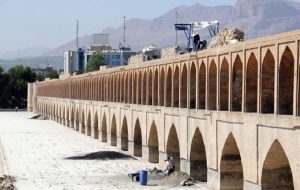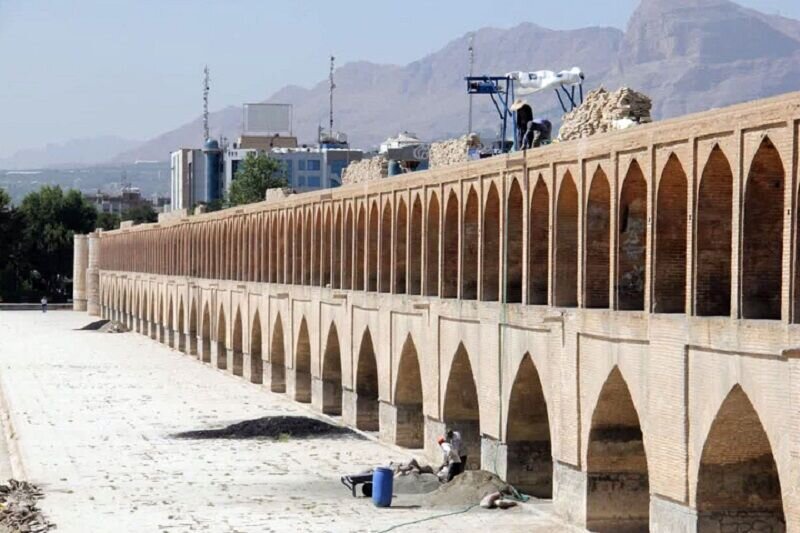200 restoration projects conducted on Isfahan’s historical monuments in nine months
TEHRAN – Over 200 restoration projects aimed at preserving the historical monuments of Isfahan province were implemented during the first nine months of the current Iranian year (starting March 20, 2024), with a total expenditure of two trillion rials, according to the provincial cultural heritage department spokesperson. Shahram Amiri highlighted several key restoration initiatives on


TEHRAN – Over 200 restoration projects aimed at preserving the historical monuments of Isfahan province were implemented during the first nine months of the current Iranian year (starting March 20, 2024), with a total expenditure of two trillion rials, according to the provincial cultural heritage department spokesperson.
Shahram Amiri highlighted several key restoration initiatives on Tuesday. Major projects completed by December include the renovation of the arcades of the Si-o-Se Pol Bridge, the dome and minarets of the Chaharbagh School, the lower arches of the Sheikh Lotfollah Mosque dome, the Taj al-Molk Dome of the Atiq Jameh Mosque, the Jameh Mosque of Natanz, the Fin Garden complex in Kashan, and the domed chamber of the Jameh Mosque of Golpayegan, Amiri stated.
Investment in tourism and hospitality
Additionally, 198 tourism, accommodation, and hospitality projects, including the construction of hotels, eco-lodges, traditional restaurants, and tourism complexes, are currently underway in the province, Amiri said.
These projects represent an investment exceeding 340 trillion rials and are reported to be 60-90% complete.
Amiri also noted that 390 investment packages have been defined across 29 counties in Isfahan province over the past three months. “These opportunities have been uploaded onto a dedicated platform to attract investors and facilitate development.”
“Many of these tourism and hospitality projects incorporate the adaptive reuse of historical structures, ensuring their preservation while fostering economic growth,” Amiri added.
Archaeological highlights
Amiri also shed light on significant archaeological efforts conducted this year. “The preservation of discoveries in the passageway of Kamar Zarin, along with the implementation of pedestrian access plans in collaboration with Isfahan Municipality, marked the most prominent archaeological project of the past nine months,” he explained.
Kamar Zarin, located near the UNESCO-registered Atiq Mosque, is among Isfahan’s oldest sites. Archaeological findings from this area span periods from pre-Islamic times to the Qajar era, with research on these discoveries still ongoing.
Other notable archaeological activities, cited by the official, included excavations in the Vigol site near Bidgol, where remnants of a Sasanian-era fire temple and transitional artifacts from the Sasanian to Islamic periods were unearthed.
Moreover, Amiri noted that restoration and boundary demarcation continued at the Sialk archaeological site in Kashan. This site is recognized as one of Iran’s most invaluable historical locations, preserving evidence of human development from the Neolithic period to the Median era.
A province rich in cultural heritage
With over 22,000 historical structures and sites, including 1,940 national and 15 UNESCO World Heritage-listed properties, Isfahan remains a focal point for cultural heritage preservation and tourism.
The province is home to more than 600 historical houses and a diverse array of natural, cultural, religious, and recreational attractions, drawing both domestic and international visitors year-round.
AM
